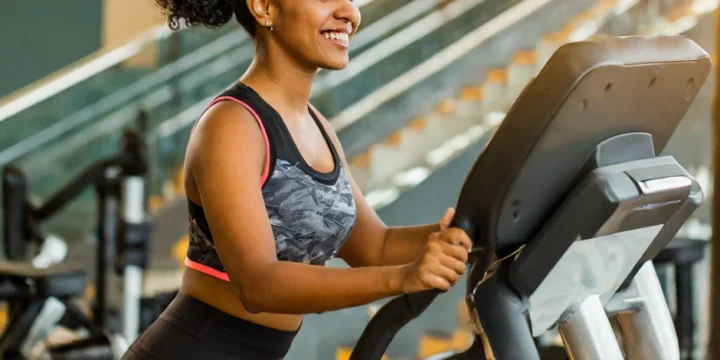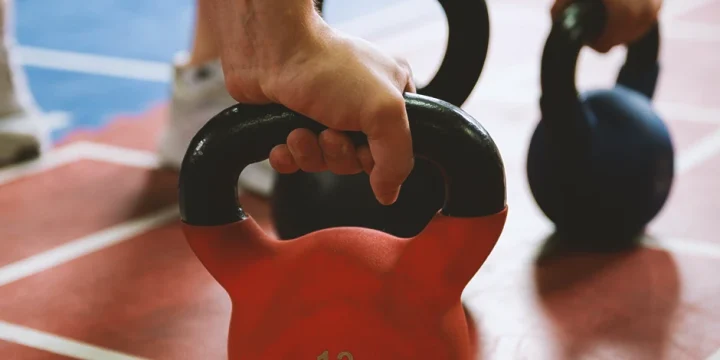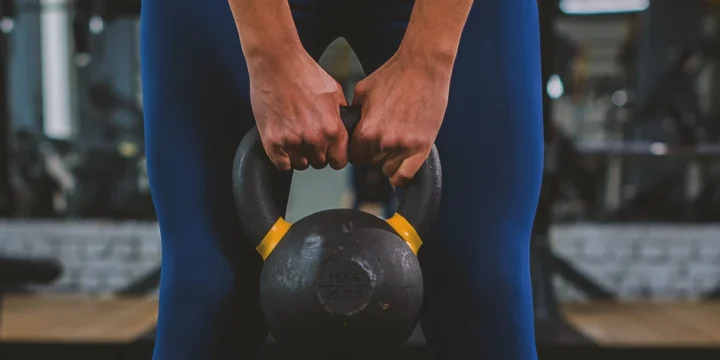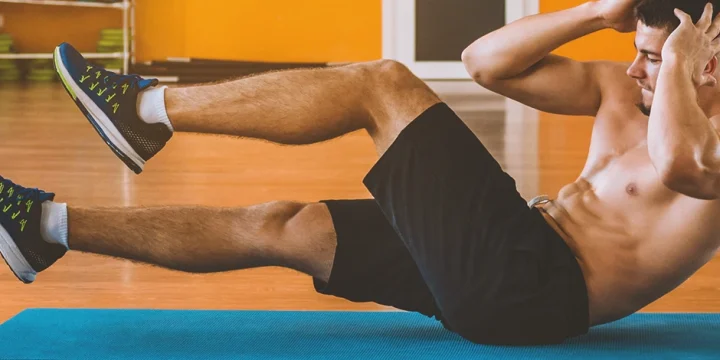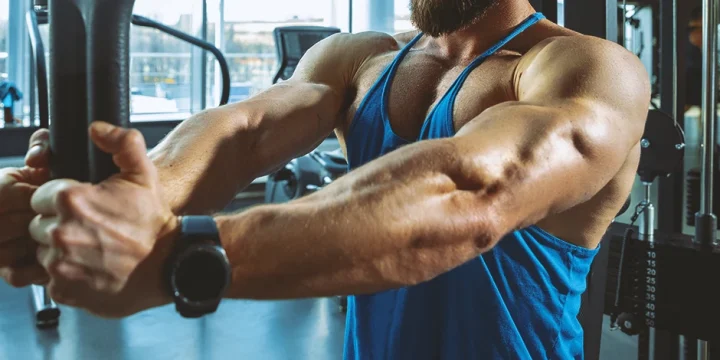A kettlebell is a flexible piece of training equipment that may improve endurance, strength, and power. Kettlebells are among the greatest exercise equipment for beginners, advanced lifters, and individuals of all ages.
As a certified fitness trainer with over eight years of experience, I've used kettlebells in my workout routine and helped my clients achieve their fitness objectives with the best kettlebell exercises.
In this article, I will detail my expertise, research, and findings on what kettlebells are, the best kettlebell exercises, and the benefits of training using kettlebells.
To start your kettlebell workouts, consider buying one of our best-quality kettlebells for your home gym.
Quick Summary
- Some of the best kettlebell exercises include the kettlebell swing, kettlebell goblet squat, single-arm kettlebell overhead press, kettlebell deadlift, kettlebell pistol squat, kettlebell snatch, single-arm kettlebell clean, kettlebell halo, and kettlebell push press.
- Kettlebell workouts usually involve many muscle groups simultaneously, making them a very efficient method to work out the legs, arms, and abs in a short period.
- A study by the National Institute of Health found that a 20-minute kettlebell snatch workout can burn 13.6 calories per minute, equivalent to running a 6-minute mile pace.
- In my opinion, while doing a kettlebell workout, you may be achieving the pinnacle of physical suppleness for your body, which has been shown to promote muscular mobility and flexibility.
The Best Kettlebell Workouts

Kettlebell Swing
The Kettlebell Swing is among the most effective kettlebell exercises, yet it is also the most difficult to perfect. Wondering will kettlebell swings burn belly fat?
The kettlebell swing is centered on the deadlift motion pattern and targets nearly every muscle in the body, particularly those in the posterior chain, leading to stronger hips and back.
How to perform:
- Place both feet shoulder-width apart with the knees slightly bent.
- Start with a kettlebell between both feet, employing a two-handed, overhand grip.
- Take a step forward. Bend your hips back, maintaining an arch in your lower back, till the kettlebell is behind and between your feet.
- Swing the load up by contracting your glutes and extending your hips. Your arms should not be doing the job.
- As you bend your hips and knees gently, let the weight fall back between the legs.
- Stretch your knees and hips to reverse the motion as you begin the following rep.
- Repeat for the desired number of reps.
Related Articles:
Kettlebell Goblet Squat
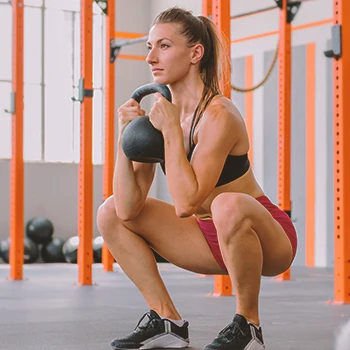
The kettlebell goblet squat is the same as the crush grip goblet squat, an anterior-loaded squat variant.
I've found that instructing my clients to hold the weight forward helps them stand straight, tighten their upper back, and maintain proper breathing.
This technique uses the weight as a counterbalance, encouraging them to evenly distribute their weight between both legs instead of leaning over their knees.
The goblet squat is primarily a lower-body exercise, but there are a few upper-body activities because the weight is held anteriorly in your hands.
How to perform:
- Stand with your knees slightly wider than shoulder width apart, a kettlebell in each hand clasped in front of your chest, palms facing each other.
- Bend both knees and descend into a squat, holding the weights in the same posture and tensing the glutes throughout to avoid rounding your back.
- Drive back up to the starting position.
- Repeat for reps.
Single-Arm Kettlebell Overhead Press
I often recommend the kettlebell single-arm overhead press to my clients for strengthening their upper body, chest, and core muscles.
I emphasize the importance of good shoulder mobility to safely push heavy weights overhead, and find this exercise excellent for testing and improving their range of motion.
A kettlebell is a unique tool since the weight is not equally distributed at the grip like barbells and dumbbells.
Unilateral movements, like the single-arm kettlebell overhead press, exercise one side of the body at a time, assisting in developing balanced strength and an appealing physique.
How to perform:
- Assume a standing stance with a neutral hold on a kettlebell.
- Clean or curl the weight into a racked front position.
- Press the bell aloft until your shoulder is fully flexed and your elbow is locked out.
- Return the kettlebell to its starting position slowly.
- Repeat for the specified number of times.
Kettlebell Deadlift
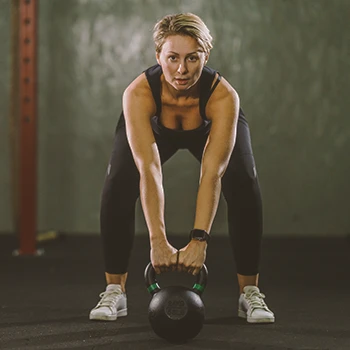
The kettlebell deadlift is a fundamental movement that must be mastered first. If you're unfamiliar with the technique, learn how to deadlift with this guide.
The kettlebell deadlift works your posterior chain, including lower body muscles such as glutes, quadriceps, and hamstrings.
It also works your upper body muscles such as your back, deltoids, erector spinae, and trapezius.
How to perform:
- Place a kettlebell between your feet, the handle lined up with the arches of your legs, and stand with both feet hip-width apart.
- Engage your core while relaxing your knees and hinging at the hips (picture tapping your buttocks on a wall).
- Roll your shoulders downward and back, packing your lat muscles in and away from the ears, and hold the kettlebell on both sides of the handle.
- Externally spin your arms as though you're attempting to split the handle in two on either side.
- Return to the beginning position by pushing your feet away from the floor.
- Repeat for the desired number of reps.
Kettlebell Pistol Squat
I've seen how the pistol squat, a fantastic unilateral exercise, engages various muscle groups, particularly the legs, core, and hips, in my clients' workouts.
This exercise also provides a cardiovascular challenge due to its full-body demands.
When guiding clients through the unsupported pistol squat, they perform it on one leg with the other extended in front, focusing on using their full range of motion to squat down, pause, and then powerfully return to the start position.
How to perform:
- Straighten one leg before you and curl the toes back.
- Keep your shoulders down while holding the kettlebell in your hands.
- Maintain your weight on the heel and midfoot.
- Sit the hips back as if doing a conventional squat.
- Slowly descend till you hit rock bottom.
- Pause for 2 to 3 seconds.
- Return to the starting position by driving from the heel.
- Repeat for the desired number of reps.
Kettlebell Snatch
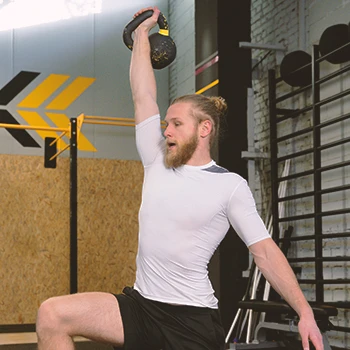
The kettlebell snatch emphasizes the fundamentals of strong leg and hip extension, which is subsequently applied to the upper extremities.
Many other strength exercises, like the barbell deadlift, snatch, and clean, share the posture of the hips and spine and the notion of midline stabilization under load.
How to perform:
- Put a kettlebell between the feet. Grab the handles with one hand, bend your legs, and push your buttocks back.
- Look forward and swing the weight back between your legs, then instantly reverse the direction to get to the starting position.
- Bring the kettlebell upward (this should be a rapid action) by driving through your hips.
- As the weight accelerates and rises, swivel your hand and shoulder (palms facing ahead) and press straight up.
- Lock the load over your head.
- Return the kettlebell to its original position between the legs.
- Repeat for the desired number of reps.
Single-Arm Kettlebell Clean
The one-arm kettlebell clean, less technical than Olympic powerlifting, boosts full-body power and explosiveness through knee and hip extension, common in power sports.
This move can enhance vertical jumps. Focusing on one side, it also hones torso stability, beefing up core strength. Plus, like all kettlebell exercises, it ramps up grip strength.
How to perform:
- Place both feet shoulder-width apart with the knees slightly bent.
- Take a loose grip on a kettlebell with your thumb pointing behind and through the legs.
- Inhale, drive through your hips and lift the kettlebell, rotating the handle around the fingers into the locked position.
- Take care not to twist the weight or flip it so that it lands on your forearm (this workout should not result in bruising).
- The kettlebell should be lifted to shoulder height in a straight line, not an arc.
- At the peak of the exercise, force your shoulder down (squeeze your armpit), compress your triceps into your ribs, and rest the kettlebell between the forearm and biceps (almost in the crook of your elbow).
- After exhaling, swivel or spin the kettlebell back to the initial position.
- Throughout the workout, keep your core muscles and glutes engaged.
- Repeat for reps.
Kettlebell Halo
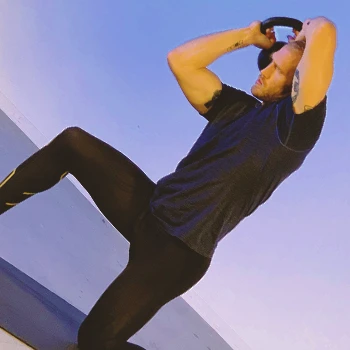
In my experience as a trainer, I've found the kettlebell halo to be an excellent warm-up exercise for the shoulder girdle.
I often recommend it to my clients as a basic warm-up before starting their kettlebell routines or as an active recovery movement between sessions.
Additionally, it's a fantastic shoulder-strengthening workout, particularly beneficial for my senior clients.
How to perform:
- Begin by standing tall and with good posture. The shoulders should be at ease and over the hips. Knees should be kept straight yet relaxed (rather than locked or tense).
- Grip the horns of the kettlebell in front of your body. The handle should be facing down, and the bottom of the kettlebell should be facing up.
- Begin by making a circle to the right.
- Raise the kettlebell around the right side of the head and lower it behind your neck.
- Finish the circle by moving it back around the left side of the head to the starting point.
- Repeat for reps.
Kettlebell Push Press
This workout is one of the effective kettlebell arm exercises that will work your upper body, notably your deltoids, upper pecs, and triceps while challenging you to engage your core.
How to perform:
- Stand with both feet below the hips, the kettlebells racked on each shoulder, elbows directly in front of your torso. This is where you'll begin.
- Dip while remaining upright by bending your knees and flatting your heels on the floor.
- Drive straight up; once your hips have extended, push the kettlebells above, maintaining your body taut and your arms near your ears.
- The rep is finished when your hands are locked out overhead, and your hips and knees are completely stretched.
- Return to a steady standing position by lowering the kettlebells to the shoulders with control before initiating the next repetition.
Kettlebell Push-up
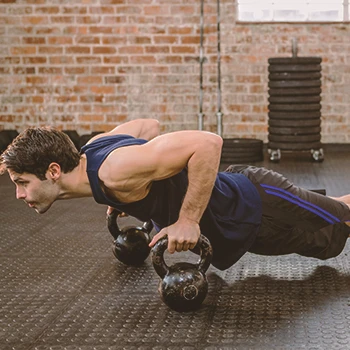
The kettlebell push-up is a variation of the standard push-up in which you grip a kettlebell instead of your hands on the floor.
This type of push-up needs more abdominal, chest, and shoulder strength.
How to perform:
- Set the kettlebell on the floor. Put your hands on the kettlebell and get into a plank position.
- In a push-up, bend your arms and drop yourself to the ground.
- Return to the plank position.
- Repeat for reps.
What Is a Kettlebell?

A kettlebell is a steel or cast iron ball with a handle connected to the top.
It has an arched grip and resembles a cannonball. These free weights range in size from 5 pounds and may be an excellent addition to your arsenal.
They have a flat bottom and a handle (also referred to as a horn) on top.
"Because the horns extend over the bell, it is ideal for teaching hinge sequencing and deadlifts to elderly people, whereas a dumbbell would need too much range of motion and depth."
- Lauren Kanski, National Academy of Sports Medicine (NASM) Certified Personal Trainer
Mastering proper techniques and different kettlebell styles is key.
Hardstyle focuses on max power with heavy weights, while sports-style offers smoother transitions using lighter weights.
Kettlebells are great for rehab, enhancing force and speed without straining joints. Their unique shape, whether held in rack or overhead positions, is also top-notch for wrist, shoulder, and elbow health.
The Training Benefits

Kettlebells Substitute Cardio
Kettlebell workouts often have a large rep range, meaning numerous muscles are exercised simultaneously.
They can provide similar cardio advantages as HIIT (high-intensity interval training) exercises if done at a constant tempo.
A 20-minute kettlebell snatch exercise was shown in a study by the National Institute of Health (NIH) to burn 13.6 calories per minute, similar to "running a 6-minute mile pace" in research [1].
Similarly, according to NIH, performing kettlebell circuit workout three times a week will increase your maximum oxygen consumption rate (VO2 max) by 6% in less than a month [2].
Improve Your Movement Skills
Kettlebells are an extremely useful tool for people looking to improve their base of mobility and strength.
If you're having trouble with the barbell back squat, for instance, using the kettlebell goblet squat is an effective way of practicing the correct technique with a safer activity that can then be enhanced as your strength increases.
"Kettlebells allow you to move athletically while adding resistance from several angles and more difficult postures."
- Jon Lewis, Certified Personal Trainer
Fix Muscle Imbalance
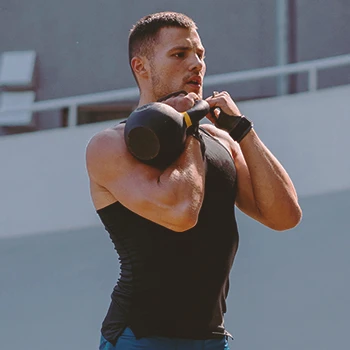
Many kettlebell workouts are unilateral, so you only utilize one arm or leg.
This, according to NIH, allows you to work on both sides equitably rather than depending on your superior side to complete a movement. It can help you overcome weaknesses and build strength [3].
Exercising one limb at a time helps with your balance. To moderate the activity, you must stabilize yourself.
For instance, pressing above with a single hand forces you to stabilize your trunk.
Build Posterior Chain Strength
According to a study from the National Library of Medicine (NLM), workouts like kettlebell swing may improve your heart rate and burn more calories from muscle, but when it gets to developing strength all through the posterior chain – the muscle groups on the back of your torso – they are the greatest [4].
Furthermore, their form and size will engage your muscles differently than barbells and dumbbells.
Simplify Your Training
Kettlebells are among the easiest weights to move about throughout your training and can be conveniently stored from the car boot to a garden shed or garage.
They may also be tailored to your fitness and strength levels.
To properly exercise for strength, muscular building, andconditioning, you only need one kettlebell in conjunction with your body weight.
- Tom Morgan, Certified Personal Trainer
Increase Range of Motion
Most kettlebell workouts involve you moving through numerous planes of motion, ranging from swings, pushes, and carries to greater dynamic actions that would be more difficult to do with a dumbbell or barbell.
You can move through broader ranges when you don't have a bar to dump weight upon.
Because of the loading and motion patterns, kettlebell workout, according to NIH, allows for a healthy lower back [5].
Nutritional Guidelines for Kettlebell Training
To complement kettlebell workouts for peak performance and recovery, focus on a balanced diet rich in protein, complex carbohydrates, and healthy fats.
- Protein is crucial for muscle repair and growth, so include lean meats, fish, eggs, or plant-based sources like lentils and tofu in your meals.
- Carbohydrates fuel your workouts; opt for whole grains, fruits, and vegetables for sustained energy.
- Healthy fats from avocados, nuts, and olive oil support overall health.
- Stay hydrated with water and electrolyte-rich drinks, especially after intense sessions.
- Post-workout, consume a mix of protein and carbs to aid muscle recovery.
- Lastly, listen to your body's hunger and fullness cues to regulate portion sizes.
FAQs
Are 20 Minutes of Kettlebells Enough?
Yes, 20 minutes of kettlebells are enough. You'll need 20 to 30 minutes twice a week. You don't have to leave your home if you have a kettlebell.
What Is the Best Kettlebell Weight for Workouts?
The best kettlebell weight for workouts is between 18 lbs and 26 lbs for women and between 26 lbs and 45 lbs for men. Many weight trainers use kettlebell training to improve their balance and coordination.
What Happens if You Do 100 Kettlebell Swings a Day?
If you do 100 kettlebell swings a day, you will improve your posture, lessen back discomfort, increase your testosterone and growth hormones, and develop a movement and fitness habit in your daily life.
References:
- https://www.ncbi.nlm.nih.gov/pmc/articles/PMC6458586/
- https://pubmed.ncbi.nlm.nih.gov/20300022/
- https://www.ncbi.nlm.nih.gov/pmc/articles/PMC9026020/
- https://www.ncbi.nlm.nih.gov/pmc/articles/PMC3096147/
- https://www.ncbi.nlm.nih.gov/pmc/articles/PMC6719359/
About The Author
You May Also Like
